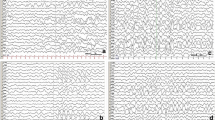Abstract
This work presents two cases of codeine intoxication in 3-year-old monozygotic twin brothers while treated with a codeine slow-release formulation. One child had to be admitted to the hospital, whereas the other one died at home after aspiration of gastric content. The concentrations of codeine and major metabolites including morphine and corresponding glucuronide conjugates were measured by liquid chromatography–tandem mass spectrometry in serum, urine, cerebrospinal fluid, and brain tissue, respectively. A genetic polymorphism study was carried out in order to determine the ability of the children to metabolize codeine by O-demethylation. A pharmacokinetic calculation was also performed to estimate the administered dose of codeine in question. High concentrations of all substances were found in samples of both children. The pharmacokinetic estimate suggests an overdose of codeine, and the possible reasons for the high opiate concentrations are discussed. Furthermore, the postmortem distribution—during and after resuscitation—might play a major role in the interpretation of postmortem concentration levels.



Similar content being viewed by others
References
Ellenhorn MJ, Barceloux DG (1988) Medical toxicology, diagnosis and treatment of human poisoning. Elsevier, New York, pp 698–709
Williams DG, Hatch DJ, Howard RF (2001) Codeine phosphate in paediatric medicine. Br J Anaesth 86:413–421
American Academy of Pediatrics, Committee on Drugs (1997) Use of codeine- and dextromethorphan-containing cough remedies in children. Pediatrics 99:918–920
Schaeffeler E, Schwab M, Eichelbaum M, Zanger UM (2003) CYP2D6 genotyping strategy based on gene copy number determination by TaqMan real-time PCR. Hum Mutat 22:476–485
Toennes SW, Maurer HH (1997) Microsoft Excel in pharmacokinetics—an easy way to solve kinetic problems in clinical toxicology, legal medicine or doping control. In: Sachs H, Bernhard W, Jeger A (eds) Proceedings to 34th International TIAFT Meeting, Interlaken, 11–15 August 1996. Molina, Leipzig, pp 201–204
Williams DG, Patel A, Howard RF (2002) Pharmacogenetics of codeine metabolism in an urban population of children and its implications for analgesic reliability. Br J Anaesth 89:839–845
The International Association of Forensic Toxicologists (2009) Reference blood level list of therapeutic and toxic substances. http://www.tiaft.org/tmembers/ttv/ttv.html
Kintz P, Tracqui A, Mangin P (1991) Codeine concentrations in human samples in a case of fatal ingestion. Int J Legal Med 104:177–178
Kirchheiner J, Schmidt H, Tzvetkov M, Keulen JT, Lötsch J, Roots I, Bröckmöller J (2007) Pharmacokinetics of codeine and its metabolite morphine in ultra-rapid metabolizers due to CYP2D6 duplication. Pharmacogenomics J 7:257–265
Madlon-Kay DJ, Mosch FS (2000) Liquid medication dosing errors. J Fam Pract 49:741–744
Teske J, Weller JP, Larsch K, Tröger HD, Karst M (2007) Fatal outcome in a child after ingestion of a transdermal fentanyl patch. Int J Legal Med 121:147–151
Bronstein AC, Spyker DA, Cantilena LR, Green J, Rumack BH, Heard SE (2007) 2006 Annual Report of the American Association of Poison Control Centers' National Poison Data System (NPDS). Clin Toxicol 45:815–917
Loetsch J (2005) Pharmacokinetic–pharmacodynamic modeling of opioids. J Pain Symptom Manage 29:90–103
Chen ZR, Somogyi AA, Bochner F (1988) Polymorphic O-demethylation of codeine. Lancet 2:914–915
Marez D, Legrand M, Sabbagh N et al (1997) Polymorphism of the cytochrome P450 CYP2D6 gene in a European population: characterization of 48 mutations and 53 alleles, their frequencies and evolution. Pharmacogenetics 7:193–202
Coffman BL, Rios GR, King CD, Tephly TR (1997) Human UGT2B7 catalyzes morphine glucuronidation. Drug Metab Dispos 25:1–4
Green MD, King CD, Mojarrabi B, Mackenzie PI, Tephly TR (1998) Glucuronidation of amines and other xenobiotics catalyzed by expressed human UDP-glucuronosyltransferase 1A3. Drug Metab Dispos 26:507–512
Donnelly S, Davis MP, Walsh D, Naughton M (2002) Morphine in cancer pain management: a practical guide. Support Care Cancer 10:13–35
Armstrong SC, Cozza KL (2003) Pharmacokinetic drug interactions of morphine, codeine, and their derivatives: theory and clinical reality, part I. Psychosomatics 44:167–171
Penson RT, Joel JP, Bakhshi K, Clark SJ, Langford RM, Slevin ML (2000) Randomized placebo-controlled trial of the activity of the morphine glucuronides. Clin Pharmacol Ther 68:667–676
Loetsch J, Geisslinger G (2001) Morphine-6-glucuronide: an analgesic of the future? Clin Pharmacokinet 40:485–499
Wahlstrom A, Lenhammar L, Ask B, Rane A (1994) Tricyclic antidepressants inhibit opioid receptor binding in human brain and hepatic morphine glucuronidation. Pharmacol Toxicol 75:23–27
Takeda S, Ishii Y, Iwanaga M et al (2005) Modulation of UDP-glucuronosyltransferase function by cytochrome P450: evidence for the alteration of UGT2B7-catalyzed glucuronidation of morphine by CYP3A4. Mol Pharmacol 67:665–672
Skopp G (2004) Preanalytic aspects in post-mortem toxicology. Forensic Sci Int 142:75–100
Skopp G, Lutz R, Gansmann B, Mattern R, Aderjan R (1996) Postmortem distribution pattern of morphine and morphine glucuronides in heroin overdose. Int J Legal Med 109:118–124
Wildfeuer A, Pfaff G, Lach P (1994) Biopharmazeutische Eigenschaften von retardiertem Codeinphosphat. Arzneim-Forsch/Drug Res 44:758–761
Aderjan RE, Skopp G (1998) Formation and clearance of active and inactive metabolites of opiates in humans. Ther Drug Monit 20:561–569
Acknowledgements
The authors thank Dr. Andreas Pahl (Institute of Experimental and Clinical Pharmacology, Erlangen-Nuernberg, Germany) for performing the genotype study, and N. Ferreirós thanks the Basque Government for her postdoctoral grant.
Author information
Authors and Affiliations
Corresponding author
Rights and permissions
About this article
Cite this article
Ferreirós, N., Dresen, S., Hermanns-Clausen, M. et al. Fatal and severe codeine intoxication in 3-year-old twins—interpretation of drug and metabolite concentrations. Int J Legal Med 123, 387–394 (2009). https://doi.org/10.1007/s00414-009-0340-0
Received:
Accepted:
Published:
Issue Date:
DOI: https://doi.org/10.1007/s00414-009-0340-0




